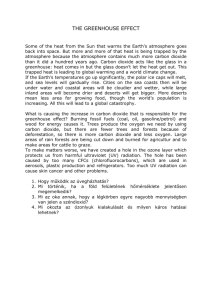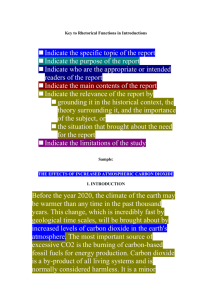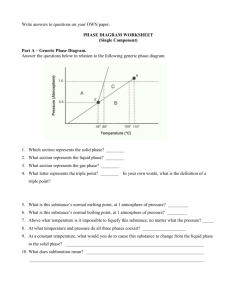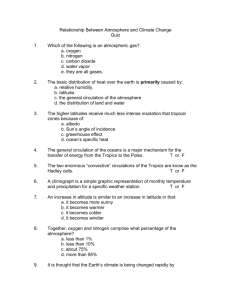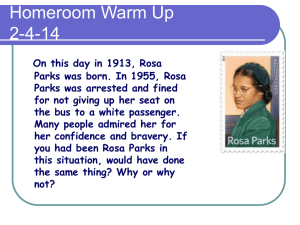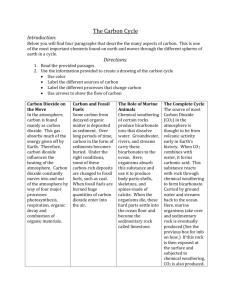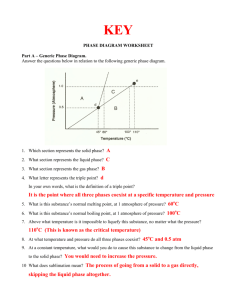5. Carbon Cycle Climate Change
advertisement
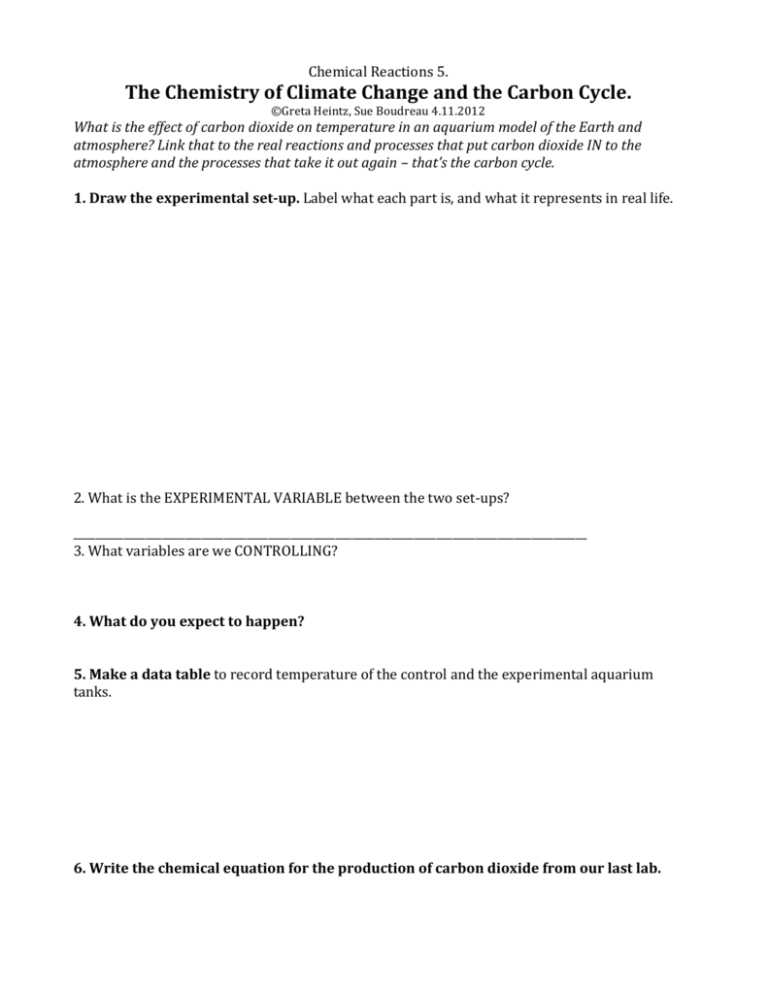
Chemical Reactions 5. The Chemistry of Climate Change and the Carbon Cycle. ©Greta Heintz, Sue Boudreau 4.11.2012 What is the effect of carbon dioxide on temperature in an aquarium model of the Earth and atmosphere? Link that to the real reactions and processes that put carbon dioxide IN to the atmosphere and the processes that take it out again – that’s the carbon cycle. 1. Draw the experimental set-up. Label what each part is, and what it represents in real life. 2. What is the EXPERIMENTAL VARIABLE between the two set-ups? ____________________________________________________________________________________________ 3. What variables are we CONTROLLING? 4. What do you expect to happen? 5. Make a data table to record temperature of the control and the experimental aquarium tanks. 6. Write the chemical equation for the production of carbon dioxide from our last lab. 7. What other processes put carbon dioxide into the atmosphere? Look at your last lab. Look up ones you don’t know in your text or online. Process i. ____________________________________________________________________ Chemical Equation: Process ii. __________________________________________________________________ Chemical Equation: 8. What processes take carbon dioxide OUT of the atmosphere? i. ____________________________________________________________________________ ii. _____________________________________________________________________________ 9. Put your information about carbon dioxide in and out of the atmosphere into a flow diagram - this is also known as the ‘Carbon Cycle’ 10. A constant level of carbon dioxide is when the processes IN and OUT are in ‘equilibrium’. What is disturbing the equilibrium of carbon dioxide concentration in our atmosphere right now? Give one important example and explain using the Carbon Cycle diagram.


